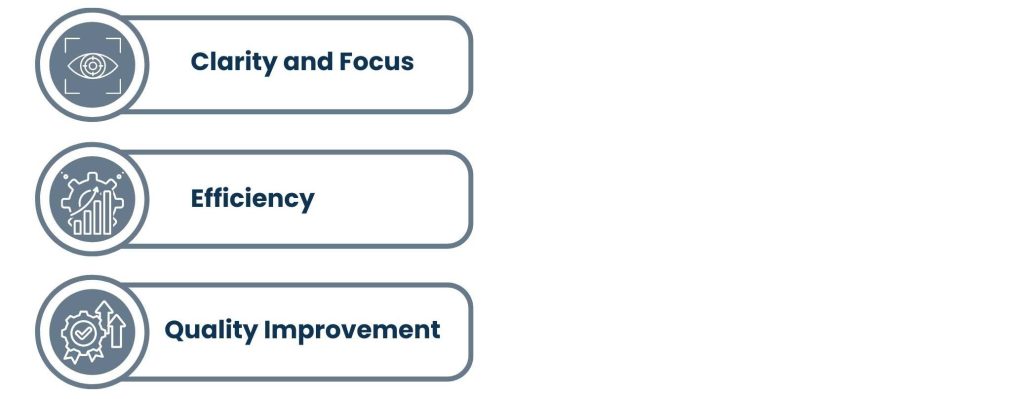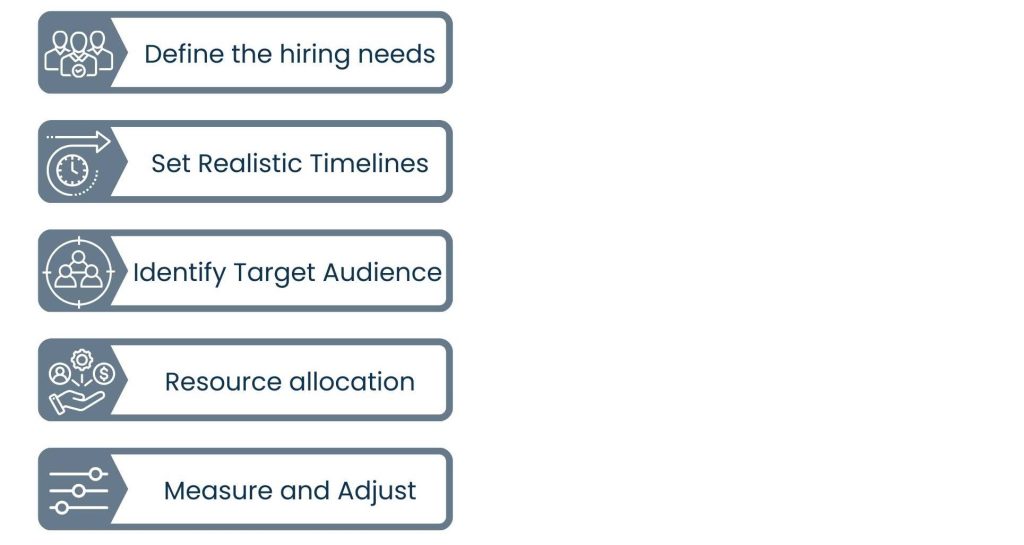Introduction
Recruitment of the right talent means looking for a needle in the haystack. but a skilled HR lays a strong foundation with recruitment plans and strategies. This streamlines the hiring process and allows the companies to have the appropriate candidate with the required skills, values, and culture for which the company is known.
In this blog, we’ll unpack crafting an effective recruitment plan, dive into key strategies, and how recruiters use these to identify and secure top-tier talent. So, Let’s get started!
Define Recruitment Plans and Their Importance
A recruitment plan strategic roadmap to help HR teams meet their hiring goals.

Here’s why recruitment plans are important:
- Clarity and Focus: They define the role requirements, target audience, and expected outcomes.
- Efficiency: A clear plan saves time by streamlining the hiring process.
- Quality Improvement: Structured plans ensure the recruitment process is thorough, and the hires are better.
Companies, without a proper recruitment plan, risk losing precious time and resources or, worse, hiring the wrong candidate.
Also Read: Lead Magnet Funnels for 2025
How to Develop Good Recruitment Plans
Developing an effective recruitment involves a few very essential steps.

Some of these include:
1. Define the hiring needs:
They should define the role, purpose, responsibilities, and needed skills. A job analysis helps outline:
- Core Responsibilities.
- Required Qualifications.
- Desired experience.
The given clarity keeps the recruiting process properly focused on the right pool of candidates.
2. Set Realistic Timelines:
Recruitment is about getting the right candidate on time. Realistic deadlines for every process, are essential like sourcing and making the final offer.
3. Identify Target Audience:
Half of the battle lies in knowing where the candidates are and whom you target.
- Know if you need fresh graduates, experienced workers, or industry-specific experts.
- Define channels and networking sites through which your target audience stays active.
4. Resource allocation:
Hiring needs resources like time, money, and equipment. Allocate those funds to the sites and strategies that best yield results.
5. Measure and Adjust:
Once your recruitment plan is in place, track some key metrics:
- Number of applicants.
- Time-to-hire.
- Quality of hires.
- Analyze them and adjust accordingly.
Recruitment Strategies to Find Top Talent
Whereas a plan is important, strategy is what makes it practical.

Here are some tried-and-tested recruitment strategies that HR recruiters use:
1. Leverage Technology:
Applicant tracking systems, AI tools, and technology have made recruitment more fluid and efficient. Processes including resume screening, interview scheduling, and communication with candidates, become streamlined.
2. Build an Employer Brand:
Top candidates are recruiting for a workplace where they can grow. Make your company stand out by developing an employer brand through social media, career pages, and employee testimonials.
3. Tap into Employee Referrals:
Now, your present employees are the biggest goldmine for referrals. Create incentives to encourage them to refer some promising candidates from their networks. Referrals usually have a better retention rate and can be onboarded faster.
4. Social Media Recruitment:
Recruiting tools like LinkedIn, Facebook, and Instagram are considered the best tools for headhunting and professional networking for recruiters.
5. Job Fairs and Industry Gatherings:
Job fairs and industry events are excellent opportunities for HR recruiters to meet candidates in person.
6. Diversity:
This strategy focuses on various talents from different backgrounds to bring new ideas and perspectives.
7. Data-Driven:
Insights on trends and needs help recruiters make informed decisions.
Challenges Recruiters Face And How Strategies Help
Recruitment plans and strategies come with challenges.

Here are some common obstacles and how recruiters overcome them:
1. High Competition:
- Solution: Focus on employer branding and offer competitive benefits.
2. Candidate Ghosting:
- Solution: Clear and concise communication during the hiring process.
3. Unqualified Applicants:
- Solution: Better job descriptions and strategic job boards target the most suitable candidates for the position in the first place.
4. Time Constraints:
- Solution: Automate time-consuming tasks using the ATS tools.
The Advantages of Recruitment Plans and Strategies

Recruitment plans and strategies bring great benefits as follows:
- Quality hiring that is in line with the organizational culture.
- Decreased time to hire.
- Less turnover rate.
- Improved candidate experience.
A good plan and execution help HR teams create an effective hiring process, ensuring long-term success.
Conclusion
Recruitment plans and strategies help companies find the best candidates on time. These tactics help attract top talent from all over the world whether you’re an HR professional or a business leader looking to enhance your hiring process.
Which tricks worked best for your recruitment efforts? Share in the comments below!
Frequently Asked Questions
A hiring plan refers to a road map for discovering the right candidates while the strategies are the implementation of the same plan.
Employer branding reflects the company’s culture, and benefits to attract potential candidates.
Trending software makes hiring smoother by automating resume auditing, and interview scheduling.
Structured strategies expand the talent pool, ensuring diversity through employer branding.
About Us
Tasks Expert offers top-tier virtual assistant services from highly skilled professionals based in India. Our VAs handle a wide range of tasks, from part time personal assistant to specialized services like remote it support services, professional bookkeeping service etc. Furthermore, it helps businesses worldwide streamline operations and boost productivity.
Ready to elevate your business? Book a Call and let Tasks Expert take care of the rest.









